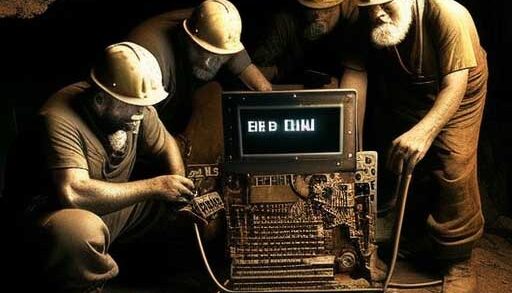What does the term “Bitcoin DeFi” mean?
Bitcoin DeFi, short for Bitcoin Decentralized Finance, refers to the emergence of decentralized applications (DApps) on the Bitcoin blockchain after the implementation of the Taproot upgrade. Before Taproot, Bitcoin transactions were comparatively slow due to the requirement that each digital signature had to be verified against a public key. This made it difficult to develop DApps and other innovative financial services on Bitcoin’s network.
However, with Taproot, the network can now group several digital signatures and validate them all at once, enabling Bitcoin to catch up with Ethereum’s success in DeFi. As a result, Bitcoin DeFi has become a viable alternative to Ethereum, allowing developers to create novel financial instruments such as decentralized exchanges (DEXs), automated loan platforms, and non-fungible tokens (NFTs) on the world’s first cryptocurrency. This has improved Bitcoin’s long-term viability by accelerating the DeFi movement on its network.
Article structure:
How does Bitcoin DeFi operate?
Bitcoin DeFi platforms rely on layer-2 scaling solutions and sidechains due to the limited programmability of the Script language used by Bitcoin, even after the Taproot upgrade. Wrapped tokens like Wrapped Bitcoin (wBTC), layer-1 blockchains like Stacks, and sidechains like Rootstock make DeFi on Bitcoin possible.
Wrapped Bitcoin is an Ethereum token that is backed one-to-one by Bitcoin, allowing users to interact with several Ethereum DApps using the wBTC token. Stacks is an independent layer-1 blockchain that makes hundreds of billions of dollars in capital in BTC available and provides new ways for Bitcoin holders to use and profit from their cryptocurrency. Stackswap DEX is an example of a DeFi product that utilizes the Stacks blockchain to enable users to trade and mint NFTs, borrow algorithmic stablecoins, and launch and exchange tokens on the Bitcoin network.
Rootstock enables Turing-complete smart contracts on the Bitcoin blockchain by running parallel to the blockchain. When BTC is sent to Rootstock, it transforms into RBTC, a smart contract-enabled Bitcoin. Based on bidirectional communication, this protocol serves as a bridge to connect both chains. Sovryn, one of the first permissionless financial apps, utilizes RSK’s technology to connect to the Lightning Network, Ethereum, Bitcoin, and BNB Smart Chain.
Which projects are part of the Bitcoin DeFi ecosystem?
Apart from wBTC, Stacks, and Rootstock, several other DeFi projects are promoting Bitcoin use cases, including BadgerDAO, RenVM, and Liquid Network.
BadgerDAO is a decentralized autonomous organization that enables Bitcoin to be used as collateral across various decentralized applications. The protocol uses the Ethereum-based token BADGER for governance and incentives. Users can earn income on their tokenized Bitcoin assets using Sett Vaults, the first product offered by Badger, which allows users to lock up their assets in SETTs and generate a yield in the form of bTokens.
RenVM is an Ethereum-based protocol that creates tokens tracking the value of non-Ethereum assets, such as Bitcoin, to offer liquidity to projects across multiple blockchains. RenVM allows Bitcoin holders to access DeFi products on Ethereum without having to sell their BTC or move their assets across blockchains. Users can submit BTC to RenVM, which generates a new token called renBTC on Ethereum that mirrors the value of the original Bitcoin, making it possible to reverse the transaction when the user wants to retrieve their BTC.
Liquid Network is a layer-2 Bitcoin solution that enables the issuance of digital assets such as security tokens, stablecoins, and other financial instruments privately and quickly on top of the Bitcoin blockchain.
LBTC, a wrapped version of Bitcoin, is the native token on the Liquid sidechain. Users can send BTC to a Lightning Network address to use the Liquid Network, and a similar amount of LBTC is minted on the Liquid Network and delivered to the user’s address after receiving 102 confirmations. Peg-out can also be initiated to withdraw BTC by sending LBTC for burning to an irrecoverable address, which allows Lightning Network members to send the original BTC to the user’s Bitcoin network address after receiving two confirmations.
What are the prospects for Bitcoin DeFi in the future?
The long-term sustainability and security, level of innovation, and incentives provided to investors will determine the effectiveness of Bitcoin DeFi platforms and protocols in the future.
Although DeFi is expanding into the Bitcoin network with scaling solutions like Rootstock, Stacks, and Liquid Network, it is currently less accessible than on the Ethereum blockchain and other smart contract platforms. Developers who choose to use the Bitcoin blockchain for DApps or NFTs need to rely on layer-1 or layer-2 solutions, unlike the Ethereum blockchain, which offers testnets like Ropsten for building DApps.
To connect Bitcoin DeFi platforms to the Bitcoin network, bridges like RenBridge are necessary, making it more challenging to develop decentralized applications on Bitcoin. Additionally, NFTs on Bitcoin are still in their early stages, but given that Bitcoin laid the foundation for cryptocurrencies, it is only a matter of time before developers flock to the Bitcoin network to create new financial instruments and platforms.
Therefore, for Bitcoin DeFi to succeed, it must offer innovative decentralized finance applications that are not available on other blockchains, have a large user base, and provide a clear advantage over existing DeFi solutions.
Good to know: DeFi and Web3: Breathtaking features that you don’t know



